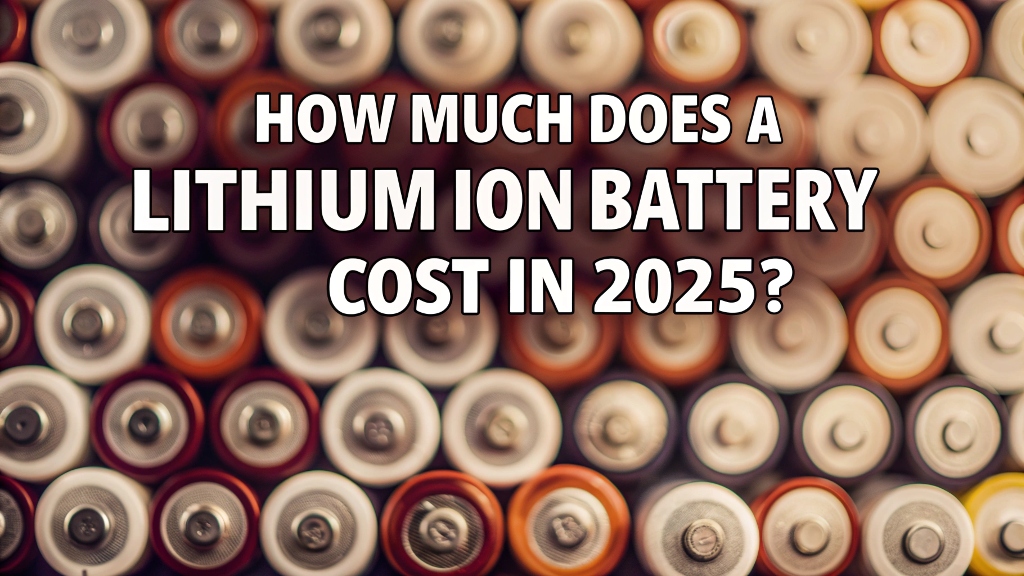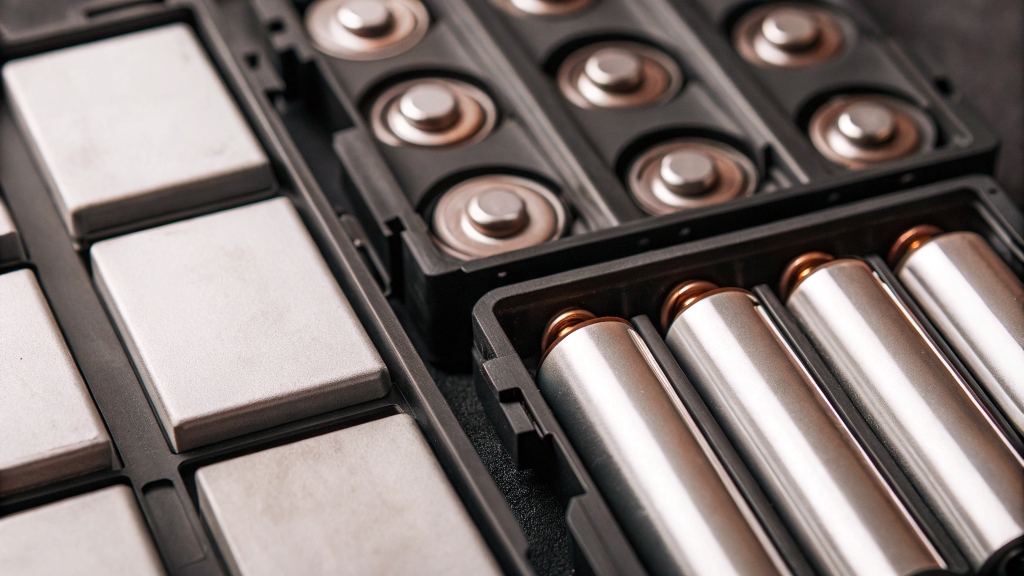How Much Does a Lithium Ion Battery Cost in 2025?
Introduction

Lithium ion batteries have become a cornerstone of modern energy storage solutions, powering everything from electric vehicles to solar energy systems. As technology advances and demand grows, understanding the cost dynamics of these batteries is crucial for making informed purchasing decisions. In this article, we’ll delve into the various factors affecting lithium ion battery costs and provide insights into current pricing trends.
Types of Lithium Ion Batteries
Lithium ion batteries come in various chemistries, each suited for different applications:
Lithium Iron Phosphate (LFP)
LFP batteries are widely used for solar energy storage and electric vehicles due to their safety and long cycle life. They typically cost around $560 per unit, making them a cost-effective choice for many applications. GYCX Solar offers high-quality LFP batteries that are perfect for residential and commercial solar systems. For more information, visit our Solar Batteries page.
Lithium Nickel Manganese Cobalt Oxide (NMC)
NMC batteries are popular in electric vehicles and power tools. They offer high energy density but come at a premium, costing approximately 20% more than LFP batteries. These batteries are ideal for applications requiring high power output.
Lithium Titanate (LTO)
LTO batteries are known for their exceptional longevity and power density, making them ideal for industrial and military applications. However, they are among the most expensive lithium ion batteries on the market.
Lithium Manganese Oxide (LMO)
LMO batteries are commonly used in electric bikes and power tools. They are relatively cheaper than LFP batteries and offer a good balance of cost and performance.
Lithium Cobalt Oxide (LCO)
LCO batteries are predominantly used in consumer electronics like laptops and smartphones. They are known for their high energy density but have a shorter lifespan compared to other lithium ion chemistries.
Factors Affecting Lithium Ion Battery Costs
Several factors influence the cost of lithium ion batteries:
Battery Chemistry
The type of chemistry used in the battery significantly impacts its cost. Batteries with chemistries that use rare or expensive metals, such as cobalt, tend to be more costly.
Energy Storage Capacity
Batteries with higher energy storage capacities are generally more expensive. This is because they require more materials and advanced manufacturing processes to achieve higher energy density.
Manufacturing Processes
The cost of manufacturing lithium ion batteries is influenced by factors such as production volume, raw material availability, and the complexity of the manufacturing process. High-volume production and efficient material utilization can help reduce costs.
Testing and Certifications
Ensuring the safety and reliability of lithium ion batteries requires rigorous testing and certifications. These processes add to the overall cost but are essential for delivering high-quality products.

Cost Comparison: Lithium Ion vs Other Battery Types
When comparing lithium ion batteries to other types of batteries, it’s important to consider both upfront costs and long-term expenses:
Lead-Acid Batteries
Lead-acid batteries are cheaper upfront but require more frequent replacements and maintenance. Over time, they can be more expensive than lithium ion batteries due to their shorter lifespan.
Nickel-Metal Hydride (NiMH) Batteries
NiMH batteries are lighter and have stable chemistries, making them suitable for low-load applications. They are generally cheaper than lithium ion batteries but lack the same energy density and longevity.
Solid-State Batteries
Solid-state batteries are newer to the market and are more expensive due to their limited production scale. However, they offer advantages such as higher safety and energy density.
Flow Batteries
Flow batteries are ideal for large-scale energy storage but require complex tank systems to manage electrolytes. While their initial cost is higher, their long service life and minimal maintenance make them cost-effective in the long run.
Lithium Ion Battery Costs for Different Applications
The cost of lithium ion batteries varies depending on their application:
Electric Vehicles (EVs)
According to BloombergNEF, the average cost of an EV battery is around $139 per kWh. Prices can range from $4,760 to $19,200 depending on the vehicle type and battery capacity.
Solar Energy Storage
Lithium ion batteries for solar energy storage typically cost between $6,800 and $10,700, excluding installation costs. These batteries are highly efficient and can significantly reduce reliance on the grid.
Consumer Electronics
Lithium ion batteries for consumer electronics like smartphones, laptops, and tablets are among the cheapest, ranging from $10 to $90 per unit.
How to Calculate the Total Cost of Ownership of a Lithium Ion Battery
The total cost of ownership (TCO) of a lithium ion battery includes several factors:
Price per kWh
The upfront cost per kWh is a primary factor in TCO calculations. Lithium ion batteries currently average around $151 per kWh, which is higher than traditional alternatives but offers better long-term value.
Battery Lifespan
Lithium ion batteries have longer lifespans, typically lasting 1,000 to 3,000 charge cycles, compared to lead-acid batteries, which only last 500 to 1,000 cycles. This reduces the frequency and cost of replacements.
Energy Efficiency
Lithium ion batteries are highly energy efficient, wasting little heat and requiring less electricity for charging. This leads to lower long-term energy costs.
Recycling and Disposal Costs
Recycling lithium ion batteries is more expensive than traditional batteries but is environmentally friendly. Costs can range from $1 to $5 per pound, depending on local regulations.
How to Choose the Right Lithium Ion Battery for Your Needs
Selecting the right lithium ion battery involves considering several factors:
Capacity
Evaluate your energy storage needs and choose a battery with sufficient capacity to meet your requirements.
Voltage
Ensure the battery’s voltage matches the power requirements of your device or system.
Size
Consider the physical space available for the battery, especially for applications like RVs or boats.
Cycle Life
Opt for batteries with a higher number of charge-discharge cycles to ensure longevity and value for money.
Supplier Reputation
Research suppliers known for quality and reliability. Read customer reviews and consider warranty options to ensure you’re getting a trustworthy product.
Future Price Trends for Lithium Ion Batteries

Experts predict that lithium ion battery prices will continue to decrease due to advancements in technology, increased production capacities, and stabilized raw material markets. By 2025, the cost per kWh is expected to drop to $113, making these batteries even more accessible for a wide range of applications.
Conclusion
Lithium ion batteries offer a versatile and cost-effective solution for various energy storage needs. While their upfront cost may be higher than traditional batteries, their efficiency, longevity, and environmental benefits make them a worthwhile investment. Whether you’re powering an electric vehicle, storing solar energy, or using consumer electronics, there’s a lithium ion battery solution that fits your needs and budget.
FAQs
How expensive is a lithium ion battery?
The cost of a lithium ion battery varies depending on its application and capacity. On average, lithium ion batteries cost around $151 per kWh, with prices ranging from $10 to $20,000 for different applications.
How many years will a lithium ion battery last?
Lithium ion batteries typically last between 2 to 10 years, depending on usage patterns and maintenance. Proper care can extend their operational life significantly.
Why are lithium ion batteries more expensive than lead-acid batteries?
Lithium ion batteries have higher upfront costs due to their advanced chemistry, higher energy density, and longer lifespan. However, they offer better long-term value due to reduced replacement frequency and lower maintenance costs.
